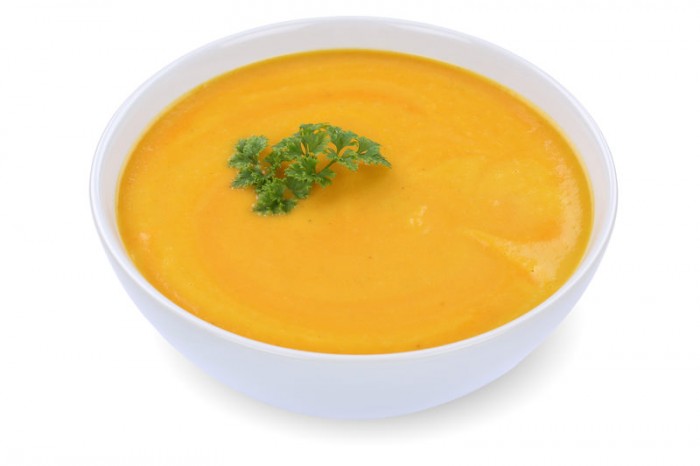You can’t beat a delicious bowl of soup to warm you in the Winter months. Quick, easy and nutritious soups make fantastic starters, or a lovely light lunch with some crusty bread.
Soup making is a great skill for children to learn as there are so many variations to be explored!
Skills Check
Follow a recipe; follow food safety & hygiene rules; tidy away; use measuring cups and spoons; use a jug to measure liquids; chop using bridge/claw safely; snip herbs with scissors; use a vegetable peeler safely; use the hob (with adult supervision).
Allergens
Gluten
(Please note the allergens listed are indicative only. Allergens vary depending on brand; check the labels on the products you use.)
Equipment
Knife, chopping board, peeler, measuring spoons and jug, saucepan, wooden spoon, blender.
Ingredients (makes 4 portions):
- 1 medium onion, peeled and chopped
- 1 clove garlic, chopped
- 1 tbsp oil
- 700g carrots, peeled and chopped
- 1 tsp grated ginger root
- 900ml reduced salt vegetable stock
- 1 tbsp fresh coriander, or other herb of choice
Method
- Fry/sweat the onion and garlic gently in the oil for 5 minutes without browning.
- Add the carrots, ginger and some seasoning. Cover and continue to fry gently for a further 10 minutes, stirring occasionally.
- Add the stock, bring to the boil and then simmer for 15 minutes, or until the carrots are tender.
- Purée the soup in a blender and serve garnished with chopped fresh herbs.
So thinking about carrot and ginger soup ...

Ginger is a type of spice used to give recipes a little extra kick!
Nutritional Information
| - | Energy | 502KJ/120kcal | 6% |
| Low | Fat | 4.2g | 6% |
| Low | Saturates | 0.6g | 3% |
| Low | Sugars | 13.7g | 15% |
| Low | Salt | 0.9g | 15% |
per 360g serving
% of an adult's reference intake
Typical values per 100g: Energy 139KJ / 33kcal
Notes
A traffic light system is used on nutrition labels to make it easier to see which foods and drinks are lower in calories, fat, sugar and salt. Try and choose more ‘greens’ and ‘ambers’ and fewer ‘reds’, and stick to smaller portions of ‘reds’.
Just because a recipe or a food has a red traffic light doesn't mean you shouldn't eat it. Understanding why a food or recipe might have a red light can be helpful. For example oily fish is high in total fat and so any recipe containing oily fish is likely to be ‘red’ for fat. But it is recommended that we eat oily fish at least once a week because the type of fat it contains is beneficial for our health.
% Reference Intakes are also shown. Reference Intakes are guidelines about the approximate amount of particular nutrients and energy required for a healthy diet (based on an average-sized woman doing an average amount of physical activity). Most children will require less than these Reference Intakes. The contribution of one serving of a food or drink to the Reference Intake for each nutrient is expressed as a percentage.




